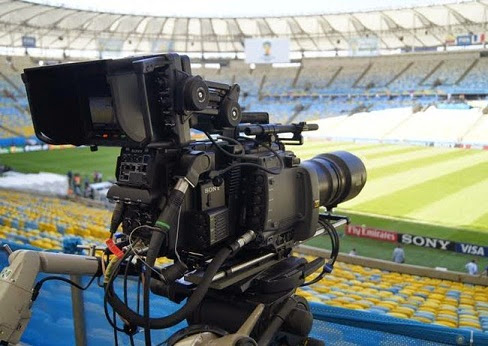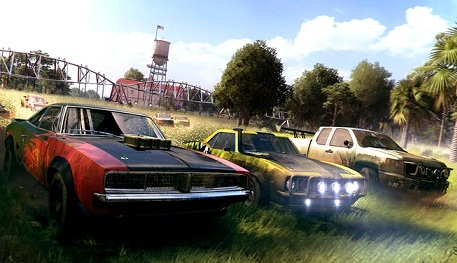The 2014 FIFA World Cup final takes place today, Sunday (13) that will be broadcasted in 4K resolution. The technology that has set tongues wagging in the world ensures images with a resolution four times better than Full HD.
In Complex TV installed around the stadium, trucks and containers functioning as central transmission stations worldwide. One of these vehicles, the Globosat, stands out among the other parked: it is coming out content with a resolution of 3840 × 2160 pixels. For this to happen, however, it is necessary that the image pass through a long process quickly, to reach the viewer with the least possible delay.
The Sony 4K technology developed in 2003 and, to assist in the live broadcast, brought employees to operate the equipment in Brazil. According to Robert Thorne, development engineer of the company's business, are installed in the field around the Maracana, 13 cameras: 12 of them are Sony PMW Model F55, in fact, Ultra HD. The other, a F65, makes the catch in 8K resolution 16 times higher than Full HD, is used on an experimental basis. To get an idea, the number is much lower than the required 41 HD camcorders to display a live game on TV.
Each Ultra HD cameras through a fiber optic cable is connected to a corresponding decoder in the truck. These decoders, the image goes to different places to adjust the color, the light, and what is most needed for the contents of 12 cameras come equal to the viewer.
Also, some HD cameras filming as the trademarks of helicopters and spider camera - one attached to a steel cable on top of the field - are also converted to 4K. According to Thorne, the quality of the converted image is not the same as that generated by a 4K camera, but still is very good. "People usually get well impressed," he said.
Also according to the engineer, the Ultra HD technology is already well developed, but few tools are necessary for it to be marketed in full swing. "It's still being manufactured decoders TVs with cable and are hoping the development of RF technology (Radio Frequency), allowing for greater mobility in transmissions, with the 4K capture, for example, by helicopter," he explained. Thorne said that the greatest difficulty of streams 4K is the amount of data which is very large and therefore takes longer to be processed.
There are 90 tablets in 30 megabyte.
The delay in transmission, however, is not very large, according to the expert, and the waiting time is quite similar to a common digital signal. One reason this occurs is due to the fact the Ultra HD signal is captured, processed and transmitted via satellite directly Maracana. The HD picture, however, follows by cable to a central IBC (International Broadcast Center) to then be sent to the world.
David Bush, Sony Marketing Director believes in Ultra HD TVs are the natural evolution of HD and says, possibly later this year, some countries are adopting the technology. When asked about the difference in quality between a picture in HD and Ultra HD, Bush confessed that he was afraid he was attending a 4K TV for the first time, for fear that the difference was not much. "I was relieved when I watched because it was really impressive. Especially in regards to detail and color, "he said smiling.
According to him, the Ultra HD resolution works great for TVs from 55 inches and has a resolution very close to a 45 mm film, used in theaters. The models available in the market are priced from £ 7000 in Brazil. The Sony television, particularly, has Internet connection and has a dedicated button for access to Netflix, streaming video service that already has content in 4K.
Thanks to the truck, to the support of Sony cameras and satellite HBS, the images can be transmitted to the 4K televisions. But as the games are watched even if there still decoders to receive it? Márcio Carvalho, director of marketing for NET , explains that the signal is encoded, compressed and sent by satellite directly from the Maracanã to the central reception NET in each city. Then, the content also receives treatment and is passed on to customers via fiber optic network.
For this, an experimental decocodificador has been used in technology demonstration events for guests and journalists conducted in various cities. "We also found that some customers had already compatible TV (with 4Kp60 format) and install the necessary to enable an unprecedented experience with ultra HD equipment in customers' homes," he added.
NET, in partnership with the Slav, will display a total of three games with the news: one of the quarterfinals, one semifinal and the grand final, played between Germany and Argentina. "It was a great learning experience for everyone, and it is a privilege to enter Brazil in the forefront when making these transmissions firsthand. We have no record of any country that has done this transmission on the scale we did here, involving hundreds of points of demonstration scattered in the main capitals, "said Carvalho.
The first live transmission of a big event using 4K technology was held in 2013, during the Confederations Cup, in which Sony used seven cameras. Only one public TV channel in the UK used the signal. In 2014, there are few lucky ones who can see Germany or Argentina be champion with audio and image at very high resolution. According to Carvalho, it is possible that in the next world, in 2018, the situation is different, and more people have access to 4K. Now we can only hope.


Comments
Post a Comment